#preserving marine ecosystems
Text

Preserving marine ecosystems is essential for maintaining biodiversity, supporting livelihoods, and mitigating the effects of climate change. By taking individual and collective action, we can contribute to the conservation and restoration of these vital environments. Our oceans are resilient, but they need our help to continue sustaining life on Earth.
0 notes
Text
Choose Environmentally Friendly Sunscreens: Protecting Marine Life
Sunscreen plays a vital role in protecting our skin from the harmful effects of the sun, especially during the summer months. However, it’s important to be aware of the impact that certain sunscreen ingredients can have on marine life, particularly coral reefs. In this article, we will explore the key concerns associated with sunscreen use and highlight alternative options that are both effective…

View On WordPress
#carotenoid family#chemical sunscreen#coral reefs#eco-friendly#environmentally friendly#marine life#nano-scale particles#natural alternatives#octinoxate#oxybenzone#oxybenzone breakdown technologies#physical sunscreen#preserving marine ecosystems#skin protection#summer#Sunscreen#sunscreen ingredients#titanium dioxide#ultra-hygrophilic bacteria#UV rays#zinc oxide
1 note
·
View note
Photo

A green sea turtle glides effortlessly above a vibrant coral reef, surrounded by a dense school of fish. The underwater world teems with life in this serene snapshot of oceanic harmony.
#green sea turtle#coral reef#marine life#underwater photography#oceanic harmony#sea creatures#wildlife#nature#tropical fish#scuba diving#snorkeling destinations#marine conservation#aquatic ecosystems#reef preservation#biodiversity
4 notes
·
View notes
Text
Preserving Our Blue Planet: Practical Ways to Save the Ocean
Shaina Tranquilino
November 18, 2023

The ocean, covering more than 70% of our planet's surface, is a vital ecosystem that provides us with numerous benefits. It regulates climate, absorbs carbon dioxide, and supports biodiversity. However, due to human activities, our oceans are facing unprecedented threats such as pollution, overfishing, and habitat destruction. To secure the future health of our blue planet, it is crucial for each one of us to take action. In this blog post, we will explore practical ways through which we can collectively save the ocean.
1. Reduce Plastic Consumption:
Plastics have become a major menace to marine life. By reducing plastic consumption in our everyday lives, we can significantly limit its impact on the ocean. Start by replacing single-use plastics with reusable alternatives. Opt for eco-friendly packaging when purchasing products and support businesses that prioritize sustainable practices.
2. Proper Waste Disposal:
Improper waste disposal leads to large amounts of garbage ending up in rivers or oceans through runoff. Always dispose of trash responsibly and recycle whenever possible. Participate in local beach cleanups or organize your own community cleanup events to prevent litter from reaching the ocean.
3. Support Sustainable Fishing Practices:
Overfishing has depleted fish populations worldwide and disrupted ecosystems. As responsible consumers, choose sustainably sourced seafood certified by organizations such as the Marine Stewardship Council (MSC). Educate yourself about sustainable fishing practices and advocate for their implementation within your community.
4. Minimize Chemical Usage:
Toxic chemicals from household cleaning products, fertilizers, and pesticides often find their way into rivers and eventually reach the ocean through runoff. Opt for environmentally friendly alternatives or make your own natural cleaners using ingredients like vinegar and baking soda. Embrace organic gardening methods that rely less on chemical inputs.
5. Conserve Water:
Conserving water not only helps preserve this precious resource but also prevents excessive runoff of pollutants into waterways. Reduce your water consumption by fixing leaks, taking shorter showers, and installing water-efficient appliances. This way, you can indirectly contribute to the health of our oceans.
6. Support Marine Conservation Organizations:
Numerous organizations tirelessly work towards protecting and restoring our oceans. Consider supporting their efforts through donations, volunteering, or raising awareness about their initiatives on social media platforms. Collaborate with like-minded individuals in your community to organize fundraisers or educational events centred around marine conservation.
7. Educate Yourself and Others:
Increasing awareness is key to saving the ocean. Stay informed about current environmental issues affecting the ocean's health and share this knowledge with others. Engage in conversations, use social media platforms as a tool for spreading awareness, and support educational programs focused on marine conservation in local schools and communities.
Saving the ocean requires collective action from individuals, communities, governments, and businesses alike. By implementing these practical steps in our daily lives, we can significantly reduce our impact on the fragile ecosystems that lie beneath the waves. Let us remember that even small changes can make a big difference when it comes to preserving our blue planet for generations to come. Together, we have the power to protect and restore our magnificent oceans – an invaluable treasure worth fighting for.
#save our oceans#ocean conservation#protect our seas#clean sea initiative#sustainable living#reduce plastic waste#marine life protection#save marine ecosystems#beach clean up#preserve our oceans#ecofriendly choices#go green for the ocean#conserve water#choose reusable options#support ocean organizations#educate for change
5 notes
·
View notes
Text
Unveiling the Secrets of Life Below Water: Goal 14 for a Sustainable Future
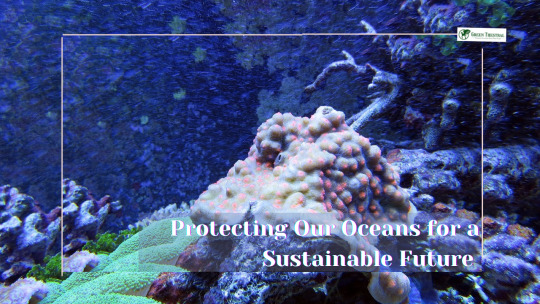
In our journey towards achieving a sustainable future, Goal 14 of the United Nations' Sustainable Development Goals (SDGs) plays a pivotal role. Life Below Water, as it is commonly referred to, focuses on the preservation and sustainable use of oceans, seas, and marine resources. With this goal, the international community aims to safeguard marine ecosystems, mitigate the impacts of human activities, and promote sustainable livelihoods for coastal communities. This article delves into the significance of Goal 14, explores the challenges faced, and highlights the initiatives that can help us ensure a healthier and more vibrant life below water.
Understanding the Importance of Goal 14
The Earth's oceans are vast and cover more than 70% of the planet's surface. They are teeming with life and harbor a remarkable diversity of species and ecosystems. From the mesmerizing coral reefs to the mysterious depths of the abyss, the oceans are a treasure trove of biodiversity, supporting millions of species, including plants, animals, and microorganisms.
Beyond their ecological significance, the oceans play a crucial role in regulating the Earth's climate. They act as a massive heat sink, absorbing a significant amount of the sun's energy and distributing it across the planet. Additionally, oceans play a vital role in the water cycle, facilitating the evaporation of water, which then falls as precipitation and sustains terrestrial ecosystems.
The oceans are not only important for the environment but also for human societies. They provide sustenance to millions of people around the world. Fishing, both for subsistence and commercial purposes, is a primary source of livelihood for coastal communities. The oceans also support economic activities such as tourism, shipping, and offshore industries, contributing significantly to global economies.
However, the delicate balance of marine ecosystems is under threat due to various human activities. Overfishing, driven by unsustainable practices and the demand for seafood, has led to the depletion of fish stocks worldwide. Large-scale industrial fishing, with destructive methods such as bottom trawling, threatens not only the targeted species but also the entire marine food web.
Marine pollution is another significant challenge faced by the oceans. Pollution from land-based sources, including plastic waste, chemicals, oil spills, and agricultural runoff, finds its way into the marine environment, causing severe harm to marine life and ecosystems. The accumulation of plastic debris in the oceans has reached alarming levels, forming giant garbage patches and causing entanglement and ingestion by marine organisms.
Habitat destruction and degradation are also taking a toll on marine ecosystems. Destructive practices such as coral reef destruction, coastal development, and the destruction of mangroves and seagrass beds result in the loss of critical habitats and the disruption of delicate ecological relationships. These habitats serve as nurseries and breeding grounds for many species, and their loss has far-reaching consequences for marine biodiversity.
Furthermore, climate change poses one of the most significant threats to life below water. Rising sea temperatures, ocean acidification, and sea-level rise are already impacting marine ecosystems. Corals, which are vital for the survival of countless marine species, are particularly vulnerable to rising temperatures and increased ocean acidity, leading to coral bleaching events and the degradation of coral reefs.
In recognition of the urgent need to protect and sustainably manage marine resources, Goal 14 of the United Nations' Sustainable Development Goals (SDGs) was established. Also known as Life Below Water, this goal aims to ensure the conservation and sustainable use of the oceans, seas, and marine resources for present and future generations.
Goal 14 encompasses various targets and indicators to guide efforts towards sustainable ocean management. One of the key focuses is the protection and restoration of coral reefs, which are among the most diverse and valuable ecosystems on Earth. Coral reefs provide habitat for numerous species, protect coastlines from erosion, and support vibrant tourism industries. By implementing measures to reduce coral bleaching, enhance reef resilience, and combat destructive practices, Goal 14 seeks to safeguard these vital ecosystems.
Another critical aspect of Goal 14 is the reduction of marine pollution. It calls for the prevention and significant reduction of marine debris, particularly plastic waste. Efforts are being made to promote better waste management systems, recycling and reusing plastics, and raising awareness about the detrimental effects of single-use plastics. Innovative technologies for ocean cleanup are also being developed to tackle existing pollution.
To address the issue of overfishing, Goal 14 emphasizes the need to restore fish stocks to sustainable levels. This involves implementing science-based management plans, combating illegal, unreported, and unregulated fishing, and promoting responsible fishing practices. Creating marine protected areas and adopting ecosystem-based management approaches can help protect critical habitats and ensure the long-term viability of fisheries.
Furthermore, Goal 14 acknowledges the urgent need to address ocean acidification, which poses a grave risk to marine organisms. By reducing carbon dioxide emissions and taking steps to enhance the resilience of marine ecosystems, such as protecting mangroves and seagrass beds, this goal aims to mitigate the impacts of ocean acidification and ensure the survival of vulnerable species.
Achieving Goal 14 requires a collaborative effort from governments, businesses, civil society organizations, and individuals worldwide. International cooperation is crucial to strengthen governance frameworks, regulate resource exploitation, combat illegal fishing, and promote sustainable practices. By taking collective action and embracing sustainable approaches, we can secure a healthier and more vibrant future for life below water.
Challenges and Threats to Life Below Water
The life below water faces a multitude of challenges that require immediate attention and concerted efforts. Overfishing, driven by unsustainable practices and illegal, unreported, and unregulated fishing, has led to a decline in fish stocks worldwide. The loss of biodiversity affects not only marine ecosystems but also the communities that depend on them for food security and economic opportunities.
Marine pollution poses another significant threat. Plastic waste, chemicals, oil spills, and other pollutants contaminate the oceans, harming marine life and ecosystems. The accumulation of plastic debris, in particular, has gained global attention due to its devastating impact on marine organisms and the potential consequences for human health through the food chain.
Ocean acidification, caused by the absorption of excess carbon dioxide from the atmosphere, poses a grave risk to marine organisms such as corals, shellfish, and plankton. Acidic waters can hinder the growth and survival of these organisms, disrupting the entire marine food web and impacting the livelihoods of coastal communities.
Initiatives and Solutions for a Sustainable Life Below Water
Achieving Goal 14 requires a comprehensive approach involving governments, businesses, civil society, and individuals. Several initiatives and solutions have emerged to address the challenges faced by life below water:
Sustainable Fisheries Management: Implementing science-based management plans, promoting responsible fishing practices, and combating illegal fishing are crucial steps towards replenishing fish stocks and ensuring the long-term sustainability of fisheries. Tools like marine protected areas and ecosystem-based management help preserve critical habitats and protect biodiversity.
Marine Pollution Prevention: Reducing plastic pollution and other sources of marine debris is vital. This can be achieved through improved waste management systems, recycling and reusing plastics, and raising awareness about the consequences of single-use plastics. Additionally, promoting the use of biodegradable alternatives and supporting innovative technologies for ocean cleanup can help mitigate the impact of existing pollution.
Climate Change Mitigation and Adaptation: Addressing climate change is fundamental to preserving life below water. Transitioning to renewable energy sources, reducing greenhouse gas emissions, and promoting sustainable coastal development are essential steps in mitigating the impacts of climate change on marine ecosystems. Additionally, enhancing the resilience of coastal communities through measures such as mangrove restoration, coastal protection, and sustainable tourism can aid adaptation efforts.
International Cooperation and Governance: Collaboration among nations is crucial for the effective implementation of Goal 14. Strengthening international frameworks, such as the United Nations Convention on the Law of the Sea (UNCLOS), and promoting regional cooperation can help combat illegal fishing, regulate resource exploitation, and ensure the sustainable use of marine resources.
Conclusion
Preserving life below water is not only crucial for the health of our oceans but also for the overall well-being of our planet. Goal 14 provides a roadmap for sustainable ocean management, aiming to conserve marine biodiversity, mitigate pollution, and promote the sustainable use of marine resources. By taking action at individual, local, and global levels, we can make a significant difference in ensuring a healthier and more vibrant future for life below water. Let us join hands and work together to safeguard the oceans for generations to come.
#Sustainable management of marine resources#Conserving marine biodiversity#Protecting coral reefs and marine ecosystems#Sustainable fishing practices for life below water#Reducing marine pollution for a healthier ocean#Restoring fish stocks for sustainable fisheries#Addressing the threats of overfishing#Combating illegal fishing activities#Preserving the delicate balance of marine ecosystems#Tackling plastic pollution in the oceans#Solutions for ocean acidification#Climate change impact on life below water#Sustainable tourism and the oceans#Promoting responsible coastal development#Achieving United Nations' Goal 14 for a sustainable future#Enhancing resilience of coastal communities#Sustainable livelihoods for coastal populations#Importance of ocean conservation and sustainability#Preserving marine habitats and species diversity#Ecosystem-based management for marine resources#Strengthening international cooperation for Goal 14#Achieving sustainable development through Goal 14#Role of marine protected areas in conservation#Long-term viability of marine ecosystems#Promoting sustainable shipping practices#Economic benefits of sustainable ocean management#Balancing human activities with marine conservation#The significance of Goal 14 in the SDGs#Ensuring a vibrant future for life below water#Global initiatives for the protection of marine environments
2 notes
·
View notes
Text
Des sujets captivants à découvrir dans des vidéos à télécharger
Vous constaterez l’implication profonde de Buzz No Limit envers ses membres à travers sa couverture étendue de sujets captivants et pertinents qui retiennent l’attention dans l’actualité internationale. Qu’il s’agisse de faits divers brûlants, de divertissements attrayants, de sujets culturels ou d’autres domaines, Buzz No Limit s’efforce de répondre aux attentes variées de ses utilisateurs. Pour…

View On WordPress
0 notes
Text
"Mexico’s government recently announced the creation of 20 new protected areas across 12 states and two coastal areas in the country, covering roughly 2.3 million hectares (5.7 million acres). This follows a series of budget cuts to the nation’s environmental agencies.
Officials introduced four new national parks, four “flora and fauna protection areas,” seven sanctuaries, two biosphere reserves and three “natural resources protection areas” under the protection of the National Commission of Protected Natural Areas (CONANP).
“This is a commendable step toward biodiversity conservation and environmental protection,” said Gina Chacón, director of the Wildland Network’s public policy program in Mexico. She told Mongabay these new areas will help preserve the country’s rich ecosystems, foster sustainable practices and protect a broad range of important species and habitats. Though some environmental and Indigenous groups are wary the budget cuts could hinder efforts to conserve these areas.
The newly protected areas will preserve habitat and ecologically important marine areas for various species, including whale sharks (Rhincodon typus), Mexican prairie dogs (Cynomys mexicanus) and jaguars (Panthera onca). They will also help safeguard ecologically important coral reefs and areas of cultural significance to Indigenous communities.
Bajos del Norte, a new national park in the Gulf of Mexico, is the largest new protected area, covering 1,304,114 hectares (3,222,535 acres), almost nine times the size of Mexico City. The area is important to the more than 3,000 families that belong to fishing communities on the Yucatán coast. It is also one of the main grouper fish (Epinephelinae) reproduction sites in the Gulf of Mexico and will safeguard threatened species, such as the rocky star coral (Orbicella annularis) and the hawksbill turtle (Eretmochelys imbricata).
Joaquín Núñez Medrano, the secretary of the UEFAHG or Union of Forestry and Agricultural Ejidos Hermenegildo Galeana A.C. (Unión de Ejidos Forestales y Agropecuarios Hermenegildo Galeana), lives in an ejido — a type of communally owned land used for agriculture and forestry purposes — called Cordòn Grande in Sierra Grande of Guerrero, along the Pacific Coast. For more than 10 years, Medrano’s community has monitored species such as the jaguar and sustainably managed the ejido’s natural resources, without government assistance.
But now, the ejido has been designated a protected area in this latest round of decrees, as it falls inside part of the new Sierra Tecuani reserve. “The goal is to strengthen what we have already been doing but with support to do it much better,” he told Mongabay.
The second- and third-largest newly protected areas are Sierra Tecuani, a 348,140-hectare (860,272-acre) biosphere reserve threatened by illegal logging, forest fires and land use changes, and the Semidesierto Zacatecas Flora and Fauna Protection Area, which is important for the recovery of the Mexican prairie dog.
The state of Oaxaca is where the government created the most new protected areas, numbering three: the 90-hectare (222-acre) Playa Morro Ayuta Sanctuary, the 56-hectare (138-acre) Barra de la Cruz-Playa Grande Sanctuary and the 261-hectare (645-acre) Playa Cahuitán Sanctuary. Other protected areas were created in the states of Quintana Roo, Veracruz, Campeche, Nayarit, Zacatecas, Chiapas, Colima, Durango, Jalisco, Chihuahua, Guerrero and the State of Mexico...
President Andrés Manuel López Obrador has protected more areas than any previous administration, with a total of 43 new areas across 3 million hectares (7.4 million acres). But Mexico’s Secretariat of Environment and Natural Resources (SEMARNAT), which works to safeguard the environment, has become severely cash-strapped throughout his six-year term.
SEMARNAT is one of many sectors in Mexico undergoing funding cuts. In recent years, Obrador’s government has implemented a series of strict austerity measures to free up more money for other areas like pensions and wages, boosting the leader’s popularity among citizens, particularly the working-class. Judicial workers, health services and academia have also had their budgets slashed in 2024...
Juan Bezaury-Creel, the director of the organization Fundación BD BioDiversidad Mexicana, said a protected area is better than no protected area because, once a decree is formalized, the government has a duty to protect it. However, this puts “huge pressure on existing personnel because they have to take care of more surface area with less resources,” he told Mongabay.
“The personnel from CONANP are heroic,” he said. “They are putting their lives on the line many times with little budget and little help.”"
-via Mongabay, January 25, 2024
#mexico#lopez obrador#andrés manuel lópez obrador#protected areas#environment#deforestation#environmental issues#national park#gulf of mexico#yucatán#oaxaca#endangered species#good news#hope#whale shark#prairie dog#jaguar
338 notes
·
View notes
Text
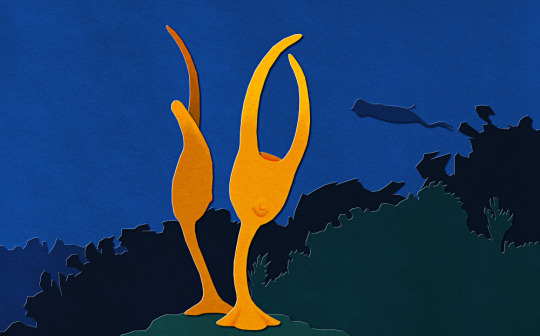
Nicknamed the "Y animal" or "wye", Escumasia roryi is an enigmatic fossil organism known from the Late Carboniferous Mazon Creek fossil beds in Illinois, USA, dating to about 308 million years ago.
Growing up to around 15cm tall (~6") this strange soft-bodied creature was Y-shaped, with two slender "arms" on each side of an apparent mouth opening, a flattened sac-like body with another opening on one side, and a long stalk ending in an attachment disc. Some specimens have uneven arm lengths, which may indicate damage from predation.
Being only known from the exceptional preservation conditions of Mazon Creek, and with nothing else quite like it in the known fossil record, Escumasia's evolutionary relationships are still a mystery. It's been tentatively linked to cnidarians – but this doesn't really fit based on its anatomy, and little further study has been done on it since its discovery in the 1970s.
It was probably a filter feeder, living attached to the seafloor and capturing suspended organic material or small planktonic prey with its arms. The environment it inhabited was a shallow tropical marine bay, located close to the equator at the time, near a large river delta that would have made the surrounding waters rather brackish. This ecosystem was dominated by cnidarians, particularly the anemone Essexella, along with various arthropods, lobopodians, polychaete worms, molluscs, echinoderms, fish, lampreys, hagfish, and other difficult-to-classify weirdos like the famous "Tully monster" Tullimonstrum.
———
NixIllustration.com | Tumblr | Patreon
References:
Clements, Thomas, Mark Purnell, and Sarah Gabbott. "The Mazon Creek Lagerstätte: a diverse late Paleozoic ecosystem entombed within siderite concretions." Journal of the Geological Society 176.1 (2019): 1-11. https://doi.org/10.1144/jgs2018-088
Nitecki, Matthew H., and Alan Solem. "A problematic organism from the Mazon Creek (Pennsylvanian) of Illinois." Journal of Paleontology (1973): 903-907. https://www.jstor.org/stable/1303070
Wikipedia contributors. “Mazon Creek fossil beds.” Wikipedia, 10 May 2024, https://en.wikipedia.org/wiki/Mazon_Creek_fossil_beds
#science illustration#paleontology#paleoart#palaeoblr#escumasia#incertae sedis#problematica#animalia#art#y animal#wye#actual ancient aliens
184 notes
·
View notes
Text






THE SECRET REALM OF UNDERWATER SCULPTURES
1. Ocean Atlas, Bahamas (2014)
This colossal underwater sculpture, by Jason deCaires Taylor, depicts a young girl supporting the weight of the ocean, symbolizing the urgent need for ocean conservation. It is a strong reminder of the effect of humans on marine ecosystems and raises environmental awareness.
2. Cancun underwater museum, Mexico
Features over 500 submerged sculptures by Jason deCaires Taylor, promoting coral growth and marine life. This one-of-a-kind attraction merges art with environmental preservation off the coast of Cancun and Isla Mujeres, it offers divers and snorkelers an immersive experience while raising awareness about ocean preservation
3. Christ of the Abyss, Italy (1954)
Created by sculptor Guido Galletti, this iconic bronze statue depicts Jesus Christ blessing divers and symbolizes faith, hope, and protection for those at sea. It has become a popular pilgrimage site for divers worldwide.
4. Amphitrite, Grand Canyon Island (2000)
It's a 9-foot bronze mermaid statue by Simon Morris. The sculpture is dedicated to the Greek goddess of the sea (wife of Poseidon), promoting marine conservation and attracting divers to the area, further enhancing the local underwater ecosystem and tourism experience.
5. Underwater Museum of Cannes, France (2021)
Created by Jason deCaires Taylor and features six large 3D portrait sculptures. This eco-museum aims to protect marine life and engage the community, symbolizing the region's rich history and the need for ocean conservation
6. Molinere Underwater Sculpture Park West Coast, Grenada
Established in 2006 by sculptor Jason deCaires Taylor. This unique park features over 75 submerged sculptures that promote marine conservation by attracting divers and creating artificial reefs, enhancing biodiversity while raising awareness about environmental issues.
113 notes
·
View notes
Text

FINALLY IT'S OUT! Please welcome Lorrainosaurus keileni, a new pliosaur from France and a replacement for Simolestes keileni.
Besides the press release artwork I also did the skeletal drawing for this one. Based on the phylogeny I mixed here Simolestes characters with animals like Kronosaurus, to reflect it's new position.
My personal story with this specimen starts in 2016, when me and Sven Sachs spontaneously visited the Natural History Museum in Luxembourg. The biggest preserved piece of the lower jaw was already on display back then but with the fragments in the collection we were able to piece it together to be nearly complete. What was a box of scraps turned into the 1,4 m tool of a monster. I was very happy to be able to bring this project to a close by contributing the artwork that would accompany the paper eventually.

I wanted to show the animal with open mouth, to show the impressive teeth and jaw shape, but without the animal attacking something, so a cleaning scenario came to mind.

Oh, btw. here the paper, it's open access
#sciart#paleoart#jurassic#marine reptile#pliosaur#lorrainosaurus#simolestes#plesiosaur#cleaning fish#luxembourg
372 notes
·
View notes
Text
What native Gallifreyan species are there?
Gallifrey has a diverse range of fauna, both native and introduced. Despite claims of minimal ecological impact, the installation of the Eye of Harmony and millions of years of Time Lord civilisation have significantly altered Gallifrey's original biosphere.
🦋 Invertebrates
Beatitude Flies: Begin as maggots and pupate into golden-winged nocturnal insects. They use nectar to create helium in their bellies and are attracted to light and decay.
Butterflies: Various species flutter across Gallifrey.
Bees: Essential for pollination.
Gullet Grubs: Likely to live in digestive tracts of larger mammals, or similar environments.
Blossom Thieves: Possibly insects that steal nectar or pollen.
Scrubblers: Likely small, cleaning insects.
Neversuch Beetles, Sandbeetles, Waspbeetles: Various beetles.
Dustworms: Likely live in dry, dusty environments.
Scissors Bugs: Possibly predatory insects with sharp mandibles.
Flutterwings: Gigantic insects (3 meters by 25 meters) that never land. Five races include Wild Endeavor, Mandrigal, Silver-Band, Blue Crystal, and Perdition.
Snails
Water-Sligs: Likely aquatic or semi-aquatic molluscs.
Web-Spinning Insects: Including spiders about an inch long.
Other dangerous invertebrates: There are also nasty creatures that live beneath big stones.
🐟 Marine Life
Singing Yaddlefish: Notable for their song, and they can be eaten.
Kittensharks: Hatch from eggs and presumably grow into Catsharks.
Axolotl Salamanders: Amphibious creatures with regenerative abilities.
🐍 Elapids
Taipan: A venomous snake, 10 metres long.
Venal Snakes: Possibly nest-stealers or highly venomous.
Bat-Snakes: Presumably flying snakes.
Dinosauria: 20-meter-long reptiles resembling brontosaurs with thick chitinous scales and serrated teeth.
🦅 Avians
Owls: Symbol of Rassilon.
Flurry Birds: Likely small, fast-moving birds.
Trunkikes: Game birds whose eggs are often eaten.
Air Diamonds: Fly in the upper atmosphere, possibly crystalline or bioluminescent.
Song Birds: Various species.
Gargantosaurs: Dinosaur-like creatures, twice the size of a hab-bloc, with two legs, vestigial wings (with purple and white feathers), and four eyes.
🦣 Mammals
Plungbolls: Thumbnail-sized furry creatures living in mountains, attach en masse to warm objects.
Taffelshrews: Edible rodent-like mammals.
Fledershrews: Bat-like, mushroom eaters, nearly extinct.
Cobblemice: Mice that sprout wings.
Rovie Mice: Field-dwelling, long-lived if kept safe, sometimes pets. They have short memories.
Moss-Rats: Possibly rodents that live in marshes with moss-like camouflage.
Vex: Burrowing animals.
Gallifreyan Womprats: 1-metre-long rats with fifteen legs.
Pig-Rats: Inhabit the Drylands, presumably combining porcine and rodent traits.
Rabbits
Flubbles: Small six-legged koalas.
Unnamed rounder rabbit-like creatures
Ounce-Apes: Might be tiny monkeys that are particularly agile.
Sealak: Perhaps a kind of seal, often eaten.
Bear-Ass: A donkey-like animal with bear-like qualities.
Horse-Cats: Probably a horse/cat hybrid-like species.
Sagittary: Horse-like creatures.
Elephants
Pig-Bears: Can be trained as pets.
Wolf-like Creatures: With long snouts and black-and-white striped fur, almost as big as adult humanoids.
Broakir: Live in foothills, often hunted for food.
Baanjxx: Arboreal browsers that like to eat hallucinogenic cerub nuts. As a child, the Doctor was kicked by one in the head, apparently.
Cows
Walrus
Gallifreyan Marlot: Purple and unique in all of time and space. Probably a bit cat-like.
House Cats: Revered as symbols of intelligence. Traditionally, Presidents kept them as pets.
🐱 Killer Cats (C.A.T.S)
Killer C.A.T.S: These sapient creatures possess instinctive precognitive powers and cat-like physiology. Known for their lethal gladiatorial contests, they despise Time Lord traditions and live in the Gin-Seng Sector of Southern Gallifrey. Their culture includes mercenaries and oracles; they are telepathic.
🏞️ Ecosystem Preservation
Though Gallifrey's outer ecology has suffered, the Time Lords have used technology to preserve many species. Extinct species have been collected, ensuring none become completely extinct. The more fearsome creatures are contained in the Death Zone, while xeno-zoos hold alien species from other worlds.
🏫 So ...
So there's your whistlestop tour of the species on Gallifrey. One day, I'll try to put these onto a species distribution map. Oh, by Rassilon's Beard, I just gave myself more work.
Related:
How is Gallifreyan geography different to Earth?: The landscape of Gallifrey.
Factoid: The Fruits of Gallifrey
What could be some biological traits of Gin-Seng cats?: Looking at who the Gin-Seng cats are, their biology, and their place on Gallifrey and in society.
Hope that helped! 😃
Any purple text is educated guesswork or theoretical.
More content ...
→📫Got a question? | 📚Complete list of Q+A and factoids
→😆Jokes |🩻Biology |🗨️Language |🕰️Throwbacks |🤓Facts
→🫀Gallifreyan Anatomy and Physiology Guide (pending)
→⚕️Gallifreyan Emergency Medicine Guides
→📝Source list (WIP)
→📜Masterpost
If you're finding your happy place in this part of the internet, feel free to buy a coffee to help keep our exhausted human conscious. She works full-time in medicine and is so very tired😴
#doctor who#gil#gallifrey institute for learning#dr who#dw eu#gallifrey#gallifreyans#whoniverse#ask answered#gallifreyan culture
56 notes
·
View notes
Text

Roman Glassware Recovered From 2,000-Year-Old Shipwreck
Glassware in perfect condition was recovered from the wreckage of a 2,000-year-old Roman shipwreck lying 1,148 feet below the ocean's surface.
The shipwreck of the Capo Corso 2 was discovered in the area between the French peninsula of Cap Corse and the Island of Capraia in Italy. An excavation of the wreck took place in early July, when archaeologists found an abundance of ancient glassware, according to a press release from Italy's National Superintendency for Underwater Cultural Heritage, which conducted the mission alongside France's Department of Archaeological Research.
Archaeologists discovered that the cargo of this ancient ship consisted almost entirely of glass. Some of it was in blocks, while others were in the form of tableware artifacts.
Glass bottles, platies, cups, bowls, and two bronze basins were found. An amphora-a type of container created in the Bronze Age-was also discovered aboard the ship.
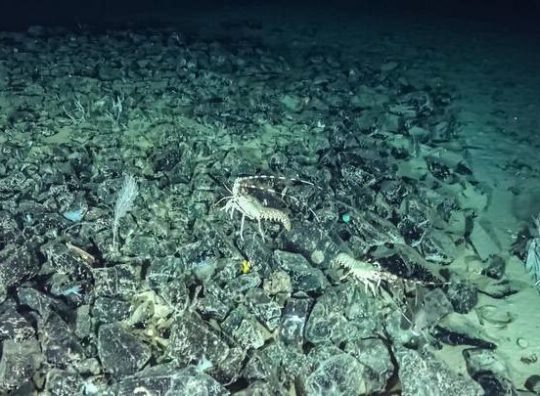

The cargo was "perfectly preserved," according to the press release. The finds will be taken to the laboratory of the National Superintendence in Taranto, Italy for closer inspections.
It is believed the ship sailed from the end of the 1st century to the beginning of the 2nd century AD, although this is not confirmed. A closer look at artifacts found aboard will hopefully give researchers a more definitive date, and hold clues into where it came from.
So far, archaeologists believe this ship must have sailed from the Middle East-from either Lebanon or Syria- considering the amphorae and glass on board. They also estimate it was heading towards Province, in France.
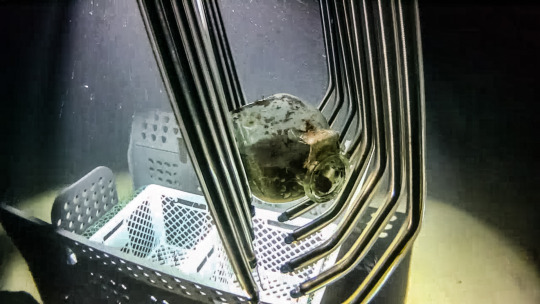

This is the second known Roman shipwreck in this region that appeared to be carrying an abundance of glass.
The Department of Archaeological Research in Drassm, France, used a research vessel called the Alfred Merlin to reach the wreck. The robot can reach 8202.0997 feet below the surface of the ocean and takes high resolution video of its surroundings.
Analysis of this ship and its cargo will give researchers new insight into the Mediterranean trade during this period.



But the mission was not just to recover the ship's artifacts, but to assess the biological state of the wreck. Shipwrecks often become artificial reefs for sea life over a period of time. The structures often create thriving ecosystems, as marine organisms attach themselves to their surface.
Assessing the biological colonization of the wreck will determine how well the artifacts can be recovered and conserved.
By Robyn White.
#Roman Glassware Recovered From 2000-Year-Old Shipwreck#Capo Corso 2#ancient glass#ancient artifacts#archeology#archeolgst#history#history news#ancient history#ancient culture#ancient civilizations#roman history#roman empire#toman shipwrech#roman art
279 notes
·
View notes
Text
Did you Know
Mammal bias isn't the only one when it comes to researching nature and deep time?
There are more!
There is also time bias! As I have discussed with @quark-nova, Essentially, because the more recent something is the easier it is to learn about - more remains of things, more details from the rocks, etc. - we also have ridiculous amounts of bias towards more recent times. This is clearest when it comes to the traditional geologic time scale - the further back you go, the longer time periods are, and nothing is divided particularly evenly. I would even say the "anthropocene" is the biggest offender in this - if we zoomed out from today to a hundred million years ago, all of the extinctions and chaos of the past 2.5 million years would get lumped together into one big mass extinction, not separated out into nitty gritty and frankly narcissistic time slices.
Then there is geographical bias! You'd think people studying the whole biosphere wouldn't have this, but we do! Thanks to *colonialism!* The geologies of North America and Europe are significantly better studied than the rest of the world, which is fighting hard to catch up. This even extends to our knowledge of modern life, with many new species still being discovered in "the global south" (I personally prefer the term Gondwana, but what can you do). And we have no one to blame for that but ourselves.
And another one is land bias! Because we are land organisms, we tend to think about land ecosystems more than oceanic ones - in fact, the ocean only really gets enough time on it in the early stages of life, everything before the Silurian, because there isn't a land ecosystem to focus on more! But the oceans are just as influential in our past - honestly, moreso - than land ecosystems, even today - think about how much El Niño affects us all! But how many people know about the end cretaceous extinction, and not the mesozoic marine revolution? How many people know that reefs at the end Cretaceous were just, made by bivalves for some reason? The list goes on.
Then there's the one most people know about already - megafaunal and charismatic bias! This often goes hand in hand with mammal bias, but essentially, because we ourselves are megafauna - I know we specifically define megafauna to exclude humans, but how the hell is that logical - we operate on a big scale, at any rate - we tend to favor megafauna in our knowledge of the past and our understanding of life. And, if its not megafauna, it at least has to be charismatic - cute, extra weird maybe, or familiar. This affects modern research so much, especially conservation and research funding - not just paleo, but also neontological work. Charismatic Megafauna get everything, and everyone else gets scraps.
This is just the tip of the iceberg! All scientists bring in bias - that's why we need as many scientists as possible, so we have as many perspectives as possible to come up with the most parsimonious and universal view of nature - but some biases are fairly universal for humans and need to be murdered in our heads by all of us. Why did Wingspan and Holotype both start with North America when the best birds are in South America and the best fossil dinosaurs are in Asia? The list is infinite.
The biases we have because of the way history has played out, the way preservation works, and because of what kind of organisms we are as humans, are ones we all have to work to disassemble and deconstruct in our brains. The more we do so, the more we can look at the big picture, understand our entire biosphere, and work together to protect it.
Plus, imagine how much cool stuff we'll learn about when we finally take the time to do so.
We have nothing to lose but our chains.
307 notes
·
View notes
Text
any friends who are living in California--
The Northern Chumash Tribal Council is having an event tomorrow to celebrate the public comment period for Chumash Heritage National Marine Sanctuary, September 20th at 11am-3pm at Morro Rock Jetty Beach, on the south side of Morro Rock at the end of Coleman Rd.
This rally is a great way to learn more about the Chumash Heritage National Marine Sanctuary, which is a really important initiative by the Chumash peoples to preserve the coastal ecosystems as well as protect important sacred sites. If you're not able to go, check out the website and sign up for the mailing list.
219 notes
·
View notes
Photo
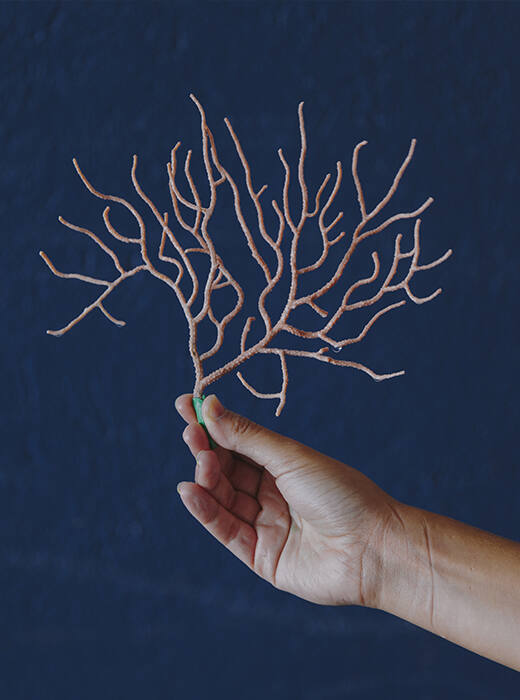
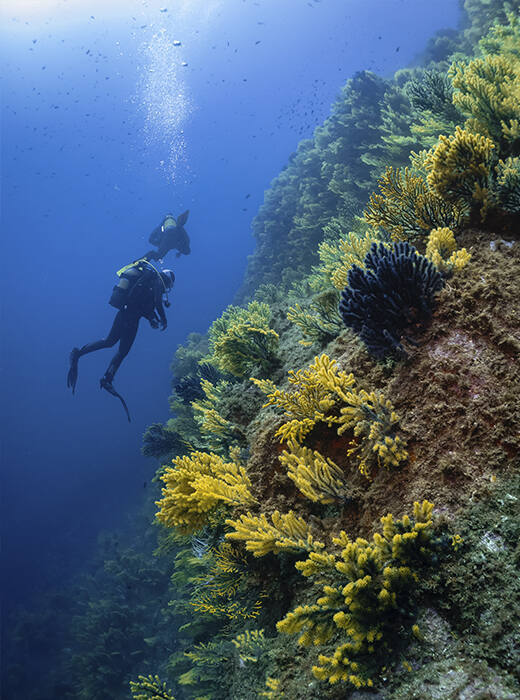
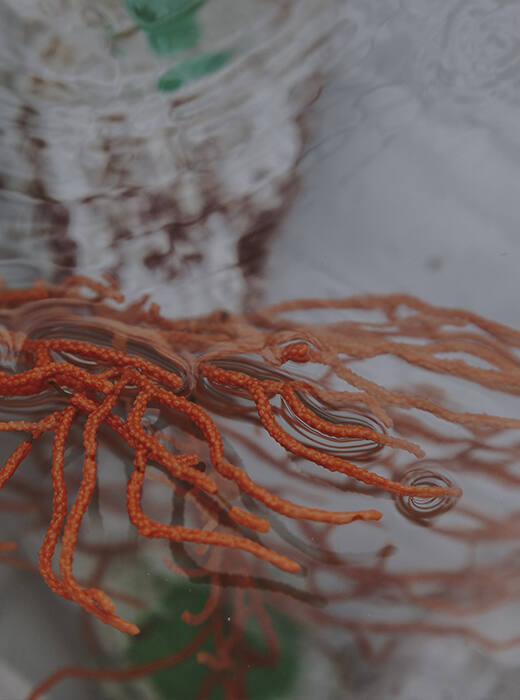
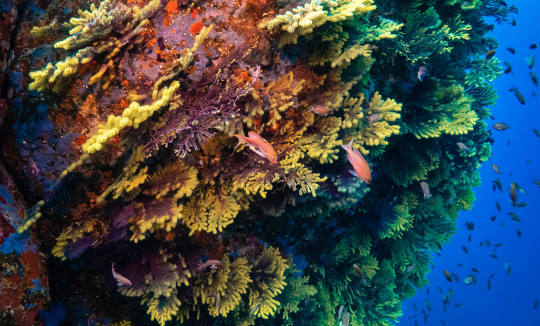
Gorgonias in the Mediterranean coast of Cap de Creus Natural Park (Comarques Gironines, Catalonia).
“The disappearance of gorgonias can cause a chain reaction that will affect the entire Mediterranean ecosystem” - Janire Salazar, Marine biologist from ICM - CSIC.
Gorgonias are organisms that make up entire underwater forests: areas in which many other species go to shelter, breed and grow. Mediterranean gorgonias currently suffer the daily impact of traditional fishing methods like gillnets. And like in any other forest, if the elements that make it up are not protected, the wildlife that it harbours will disappear. The ResCap project, which is carried out by ICM – CSIC, Fundación Biodiversidad and the fishermen’s associations of Port de la Selva and Cadaqués, aims to protect and recover all deep-sea gorgonias found in the Cap de Creus Natural Park.
Gorgonias are marine organisms which, despite the way they look, are not plants or algae, but animals. They are stationary, live in depths of more than a hundred meters, show very slow growth and take many years to recover. They are vulnerable, but great biodiversity depends on their growth. “Gorgonias are a structural species to the Mediterranean ecosystem, as they favour the growth and survival of multiple species,” says Marina Biel, one of the biologists from CSIC involved in the project.
Biologists, fishermen and agents from the Cap de Creus Natural Park work together to rescue all those gorgonias that have been accidentally trapped in fishing nets. Once recovered, the gorgonias are taken to the lab’s experimental aquariums to be studied and treated before they are freed again. When they are ready to go back to the marine environment, they are affixed to a base made of stone so that its weight will create the so-called “badminton effect” when they are released back into the sea. “The badminton effect ensures that the gorgonia will land on its feet on the seafloor and will therefore be able to feed itself and survive with no problems,” Marina Biel says.
The Pleamar projects bring to the forefront how important it is for biologists and fishermen to work together on the restoration of sea floors and the preservation of an essential species for the Mediterranean ecosystem: gorgonias. “Both parties work towards the same goal: to protect the sea floor and its biodiversity,“ ICM - CSIC biologists Janire Salazar and Marina Biel point out. Salvador Manera, a fisherman from the fishermen’s association of Port de la Selva and driving force of other sustainable projects linked to the Mediterranean, highlights how valuable these synergies will be into the future: “They help to raise awareness and to make us understand that we need to fish in a sustainable way if we want to carry on doing our job.”
Over the first year of the project (2018), more than 400 gorgonias were released back into the sea, with a survival rate above 90%. All parties involved hope to match or improve these results in 2019, as they also help to raise awareness about these kinds of initiatives. “There is an increasing number of people who are interested in marine conservation projects,” Janire and Marina say, as they insist on the meaning behind these actions: “The actions you take today will be rewarded tomorrow. It’s about giving something in return for the great things that the sea gives us each day.”
Shared from: Pleamar Projects: RESCAP & MITICAP. Institut de Ciències del Mar through Estrella Damm.
#natura#cap de creus#catalunya#marine conservation#marine biology#gorgonia#mediterranean#catalonia#sea#ocean#biology#biodiversity#wildlife#earth#ecology#sustainability#environment#conservation#wildlife conservation#marine life
253 notes
·
View notes
Text
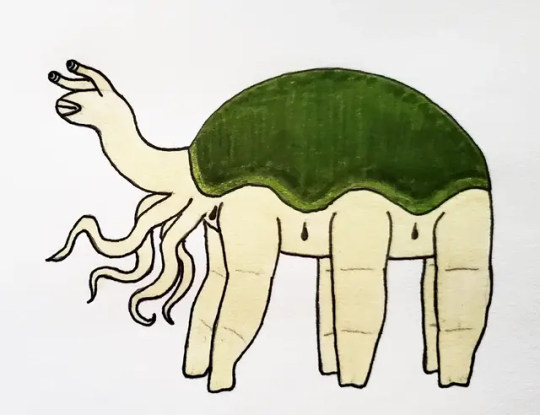

The Protostags are a sophont species discovered on the moon Khlolo in the year 3939. Initial studies of these beings was clouded by the tail end of the intergalactic war effort against the Barront, which was still taking up a sizable portion of the Ecosystem's resources. Since then, many details regarding their biology and culture have come to light. Protostags are invertebrates descended from entirely boneless, tentacled marine creatures that evolved to become muscular land dwellers, still thriving in both environments due to the thick, humid atmosphere of their world. Because of the fairly low differences in morphology between them and their animal ancestors, there was a controversial theory that their species was a result of "uplifting" technology, wherein animals are given sophont level intelligence through genetic engineering. This has been thoroughly debunked through genetic studies, although a seed of doubt still remains due to how poorly the fossil record is preserved on their planet. Due to their lack of a centralized brain, they are able to survive the loss of any of their extremities, including their head, and additionally have the ability to fully regenerate any of these body parts throughout their lifespan. They are long lived, usually living within the range of 180 to 200 years. On their back is a thick, leathery mantle that they can squeeze nearly their whole body under, much like their ancestors who could fully retract into a sort of shell. Between their tentacles and each leg is a respiratory spiracle through which they can vocalize. They reproduce through a practice sometimes termed "penis fencing" where two of the hermaphroditic species ritualistically battle with their spur tipped members to determine which will penetrate the other, impregnating the "loser" in the process. Culturally, their powerful and unique musculature lends itself to similar feats of strength in their sports, most often partaking in weight pulling challenges and fighting games similar to traditional Human "Sumo Wrestling". Protostags are well known for their eidetic memories and high tolerance for alcohol, which is enjoyed by all ages on their homeworld.
#art#illustration#creature design#scifi#speculative biology#aliens#spec evo#speculative evolution#science fiction#xenobiology#the ecosystem#protostags#alien
9 notes
·
View notes